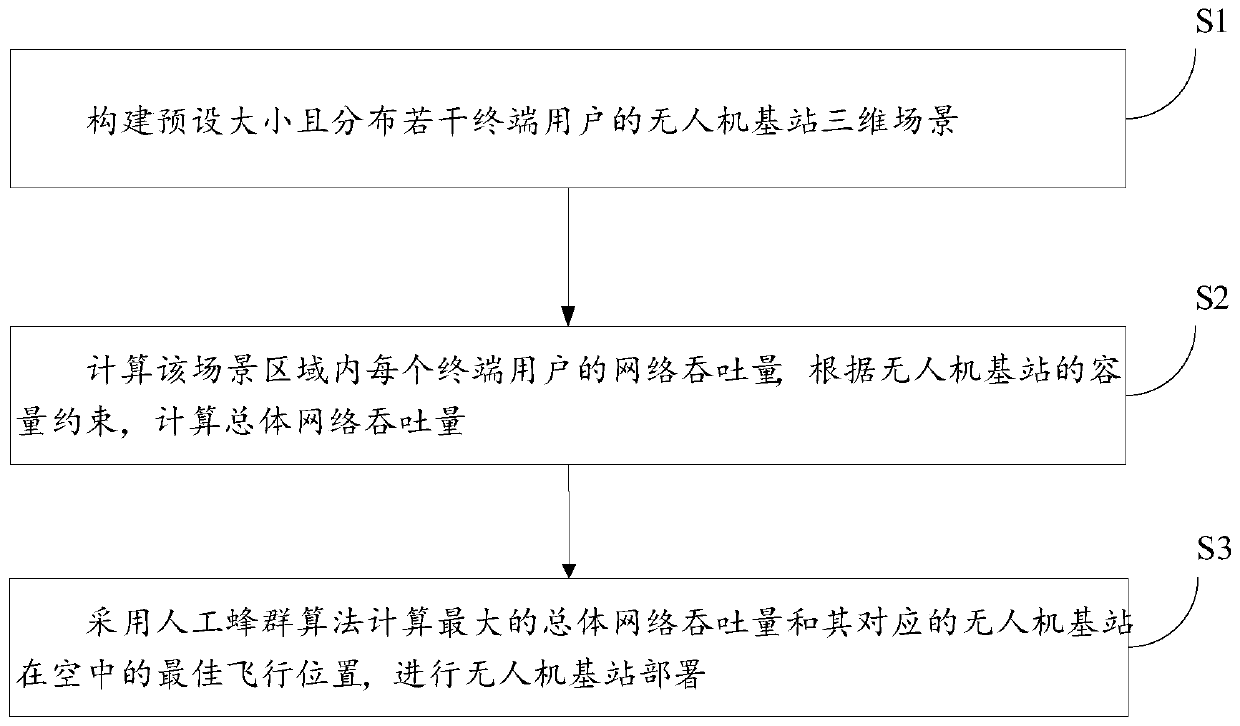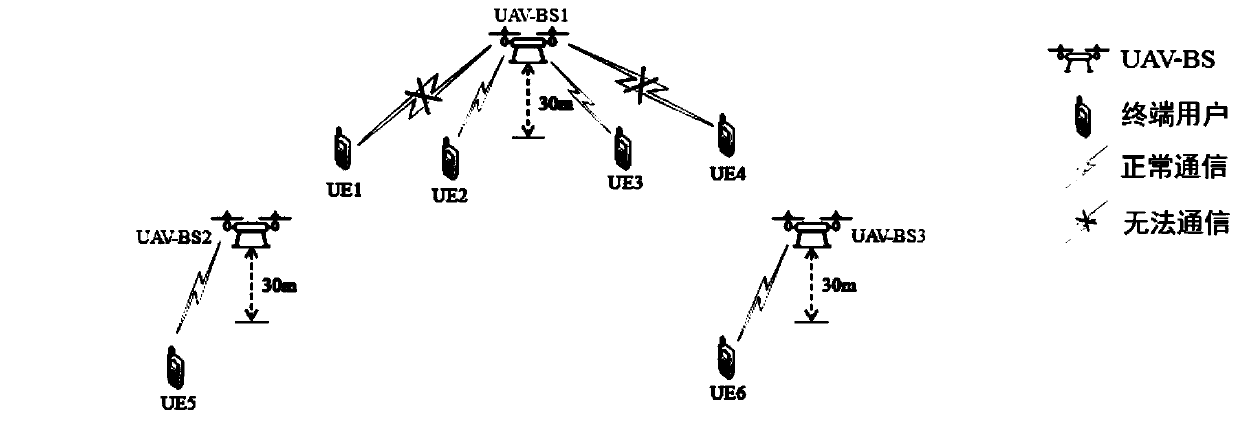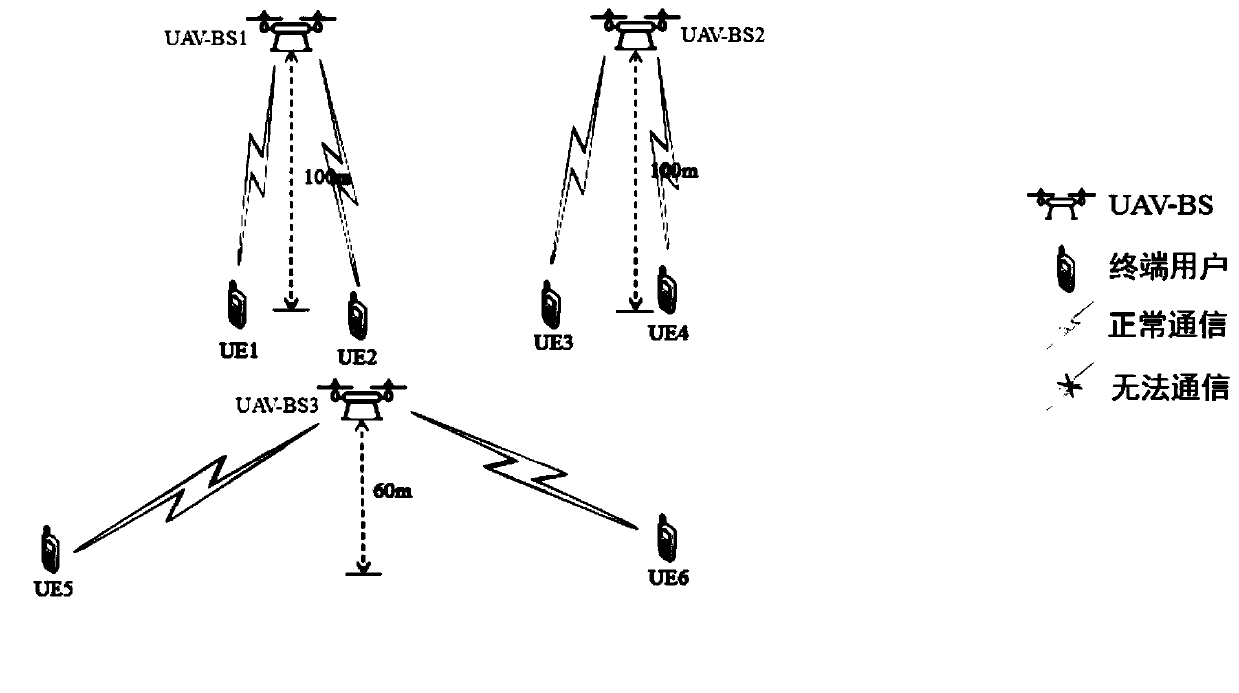Post-disaster unmanned aerial vehicle base station deployment method and system based on artificial bee colony algorithm
An artificial bee colony algorithm and drone base station technology, which is applied in the post-disaster drone base station deployment method and system field, can solve the problem of single consideration factors, and achieve the effects of improving adaptability, improving performance, and enhancing contrast
- Summary
- Abstract
- Description
- Claims
- Application Information
AI Technical Summary
Problems solved by technology
Method used
Image
Examples
Embodiment 1
[0075] According to an aspect of one or more embodiments of the present disclosure, a post-disaster UAV base station deployment method based on artificial bee colony algorithm is provided.
[0076] Such as figure 1 As shown, a post-disaster UAV base station deployment method based on the artificial bee colony algorithm, the method includes:
[0077] A post-disaster UAV base station deployment method based on artificial bee colony algorithm, the method comprising:
[0078] (1) Establish a 3D scene with a specified size and distributed with several end users.
[0079] (2) Calculate the overall network throughput in the area, first calculate the network throughput of each end user, then consider the UAV-BS capacity constraints, and finally calculate the overall network throughput.
[0080] (3) Use the artificial bee colony algorithm to calculate the maximum overall network throughput and the corresponding optimal flight position of the UAV-BS in the air.
[0081] In the embodi...
Embodiment 2
[0154] According to an aspect of one or more embodiments of the present disclosure, there is provided a computer-readable storage medium.
[0155] A computer-readable storage medium, wherein a plurality of instructions are stored, and the instructions are suitable for being loaded and executed by a processor of a terminal device to execute the post-disaster UAV base station deployment method based on an artificial bee colony algorithm.
Embodiment 3
[0157] According to an aspect of one or more embodiments of the present disclosure, a terminal device is provided.
[0158] A terminal device, which includes a processor and a computer-readable storage medium, the processor is used to implement instructions; the computer-readable storage medium is used to store multiple instructions, and the instructions are suitable for being loaded by the processor and executing the described one A post-disaster UAV base station deployment method based on artificial bee colony algorithm.
[0159] These computer-executable instructions, when executed in a device, cause the device to perform the methods or processes described in accordance with various embodiments in the present disclosure.
[0160] In one or more embodiments of the present disclosure, a computer program product may include a computer-readable storage medium carrying computer-readable program instructions for carrying out various aspects of the present disclosure. A computer ...
PUM
 Login to View More
Login to View More Abstract
Description
Claims
Application Information
 Login to View More
Login to View More - R&D
- Intellectual Property
- Life Sciences
- Materials
- Tech Scout
- Unparalleled Data Quality
- Higher Quality Content
- 60% Fewer Hallucinations
Browse by: Latest US Patents, China's latest patents, Technical Efficacy Thesaurus, Application Domain, Technology Topic, Popular Technical Reports.
© 2025 PatSnap. All rights reserved.Legal|Privacy policy|Modern Slavery Act Transparency Statement|Sitemap|About US| Contact US: help@patsnap.com



